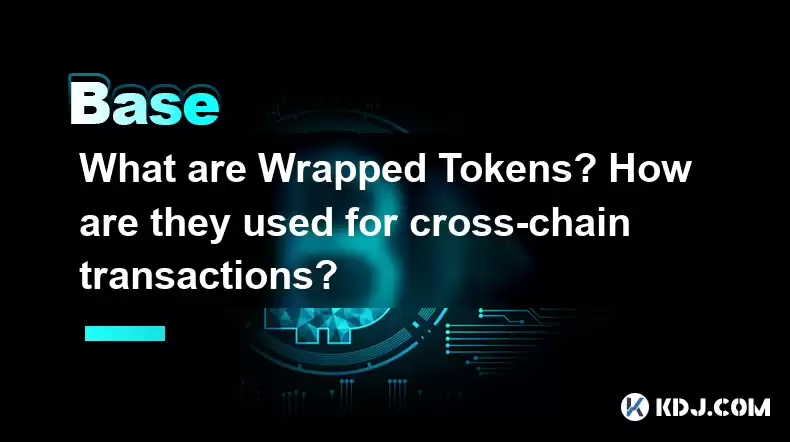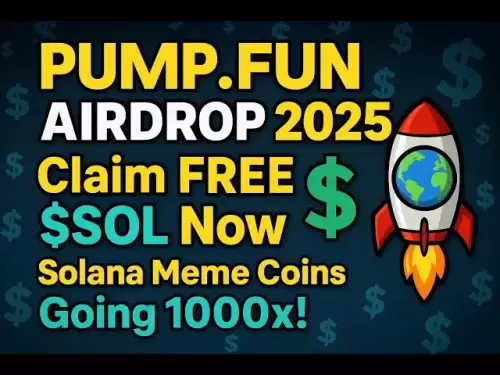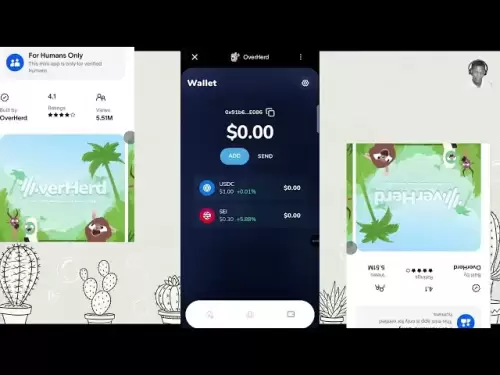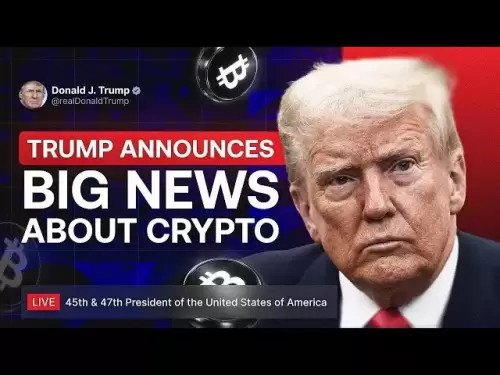-
 Bitcoin
Bitcoin $114100
-0.14% -
 Ethereum
Ethereum $3635
-0.73% -
 XRP
XRP $2.949
-2.85% -
 Tether USDt
Tether USDt $0.9999
-0.03% -
 BNB
BNB $760.3
-0.78% -
 Solana
Solana $163.8
-2.77% -
 USDC
USDC $0.9998
-0.04% -
 TRON
TRON $0.3323
-0.57% -
 Dogecoin
Dogecoin $0.2004
-2.99% -
 Cardano
Cardano $0.7245
-2.87% -
 Hyperliquid
Hyperliquid $37.52
-3.75% -
 Stellar
Stellar $0.3915
-3.58% -
 Sui
Sui $3.416
-2.20% -
 Bitcoin Cash
Bitcoin Cash $559.5
-0.84% -
 Chainlink
Chainlink $16.41
-2.16% -
 Hedera
Hedera $0.2406
-1.78% -
 Ethena USDe
Ethena USDe $1.001
0.00% -
 Avalanche
Avalanche $22.13
-1.98% -
 Litecoin
Litecoin $117.8
-4.32% -
 UNUS SED LEO
UNUS SED LEO $8.989
0.01% -
 Toncoin
Toncoin $3.183
-5.09% -
 Shiba Inu
Shiba Inu $0.00001214
-1.97% -
 Uniswap
Uniswap $9.654
-1.71% -
 Polkadot
Polkadot $3.616
-1.18% -
 Monero
Monero $291.6
-2.66% -
 Dai
Dai $0.9999
0.00% -
 Bitget Token
Bitget Token $4.310
-1.10% -
 Cronos
Cronos $0.1382
-1.93% -
 Pepe
Pepe $0.00001021
-3.40% -
 Aave
Aave $257.9
-1.42%
What are Wrapped Tokens? How are they used for cross-chain transactions?
Wrapped tokens bridge blockchain gaps, letting users transfer crypto assets like Bitcoin to different networks (e.g., wBTC on Ethereum) via smart contracts, offering DeFi access but carrying risks related to smart contract vulnerabilities and custodian reliability.
Mar 05, 2025 at 06:01 am

Key Points:
- Wrapped tokens are representations of one cryptocurrency on a different blockchain.
- They facilitate cross-chain transactions by bridging the gap between incompatible networks.
- The process involves locking the original token and minting an equivalent wrapped version on the target chain.
- Security and trust are paramount, relying on smart contracts and reputable custodians.
- Various wrapped tokens exist, each with its own specific use cases and associated risks.
What are Wrapped Tokens?
Wrapped tokens are essentially cryptographic tokens that represent another cryptocurrency on a different blockchain. Imagine you have Bitcoin (BTC) on the Bitcoin blockchain, but you want to use it within the Ethereum ecosystem. You can't directly transfer BTC to Ethereum. This is where wrapped tokens come in. A wrapped BTC (e.g., wBTC) is a token on the Ethereum blockchain that mirrors the value and ownership of your BTC. This allows you to participate in decentralized finance (DeFi) applications, use it as collateral, or engage in other activities within the Ethereum network. The key is that the wrapped token is pegged 1:1 to the original asset.
How are Wrapped Tokens Created?
The creation of wrapped tokens involves a process of locking the original cryptocurrency in a smart contract. This smart contract is designed to ensure that only one wrapped token is created for each original token locked. This process is typically managed by a decentralized custodian or a reputable centralized exchange. Once the original asset is locked, an equivalent amount of the wrapped token is minted on the target blockchain. This minted token can then be freely traded and used within the new ecosystem.
How are Wrapped Tokens Used for Cross-Chain Transactions?
Wrapped tokens are the bridge that enables cross-chain transactions. They allow users to move assets between different blockchains without actually transferring the original asset. This significantly increases the interoperability of various cryptocurrencies. For instance, if you want to use your BTC in an Ethereum-based DeFi application, you would first wrap your BTC into wBTC. After using wBTC, you can then redeem your wBTC for the original BTC, effectively completing the cross-chain transaction.
Security Considerations of Wrapped Tokens
The security of wrapped tokens is crucial. The integrity of the wrapping process relies heavily on the security of the smart contracts used and the trustworthiness of the custodian holding the original assets. Any vulnerabilities in the smart contract could be exploited, potentially leading to the loss of funds. Therefore, it's vital to use only wrapped tokens from reputable sources with a proven track record of security and transparency. Auditing of smart contracts is also a critical aspect to consider.
Examples of Wrapped Tokens
Several popular wrapped tokens exist, each designed to represent a specific cryptocurrency on a different blockchain. wBTC (wrapped Bitcoin) is a prominent example, representing BTC on the Ethereum blockchain. Other examples include wETH (wrapped Ether), which represents ETH on other blockchains, and renBTC (another wrapped Bitcoin option). The choice of wrapped token often depends on the specific blockchain and the application being used.
The Role of Smart Contracts in Wrapped Tokens
Smart contracts play a pivotal role in the creation and management of wrapped tokens. They act as the intermediary between the original asset and its wrapped counterpart, ensuring a 1:1 peg. The smart contract governs the locking and unlocking of the original asset and the minting and burning of the wrapped token. The security and functionality of the entire system rely heavily on the robust design and implementation of these smart contracts.
Centralized vs. Decentralized Wrapping
Wrapped tokens can be created through either centralized or decentralized processes. Centralized wrapping involves a trusted entity like a large cryptocurrency exchange acting as a custodian. Decentralized wrapping, on the other hand, uses decentralized protocols and smart contracts, eliminating the need for a central authority. Each approach has its own advantages and disadvantages in terms of security, efficiency, and transparency.
Risks Associated with Wrapped Tokens
While offering significant benefits, wrapped tokens also carry certain risks. The risk of smart contract vulnerabilities is a significant concern. If a vulnerability is exploited, it could lead to the loss of funds. Additionally, the risk of custodian failure is a factor, especially with centralized wrapping solutions. It is crucial to research and understand these risks before using wrapped tokens.
Understanding the Pegging Mechanism
The 1:1 pegging of wrapped tokens to their underlying assets is maintained through various mechanisms. These mechanisms typically involve a combination of smart contracts, audits, and reserves. The stability of this peg is crucial for the value and usability of the wrapped token. Any deviation from the 1:1 ratio can significantly impact the token's market price and user confidence.
The Future of Wrapped Tokens
Wrapped tokens are expected to play an increasingly important role in the future of the cryptocurrency landscape. As the adoption of decentralized finance (DeFi) and cross-chain interoperability continues to grow, the demand for seamless asset transfer between different blockchains will also increase. This will further drive the development and innovation of wrapped tokens and related technologies.
Frequently Asked Questions:
Q: Are wrapped tokens safe? A: The safety of wrapped tokens depends on the security of the underlying smart contracts and the trustworthiness of the custodian (if applicable). Thorough research and due diligence are crucial before using any wrapped token.
Q: How do I unwrap a wrapped token? A: The process of unwrapping typically involves interacting with the smart contract that governs the wrapped token. This usually involves sending the wrapped token to the contract, which then releases the equivalent amount of the underlying asset.
Q: What are the benefits of using wrapped tokens? A: Wrapped tokens offer increased interoperability, enabling the use of assets across different blockchains. This expands access to various DeFi applications and services.
Q: What are the risks associated with wrapped tokens? A: Risks include smart contract vulnerabilities, custodian failure (in centralized wrapping), and potential price slippage due to market volatility.
Q: Are all wrapped tokens the same? A: No, different wrapped tokens exist, each with its own specific characteristics, security features, and associated risks. Careful research is necessary before using any particular wrapped token.
Q: Can I use wrapped tokens on every blockchain? A: No. Wrapped tokens are designed for specific destination blockchains. A wBTC token, for instance, is designed for use on the Ethereum network, not the Solana network. You need a wrapped token specific to your target blockchain.
Disclaimer:info@kdj.com
The information provided is not trading advice. kdj.com does not assume any responsibility for any investments made based on the information provided in this article. Cryptocurrencies are highly volatile and it is highly recommended that you invest with caution after thorough research!
If you believe that the content used on this website infringes your copyright, please contact us immediately (info@kdj.com) and we will delete it promptly.
- Coinbase, Financing, and the Crypto Market: Navigating Choppy Waters in NYC Style
- 2025-08-06 12:50:11
- Bitcoin in Indonesia: Crypto Education and Economic Strategy
- 2025-08-06 12:50:11
- DeriW Mainnet: Zero Gas Fees Revolutionize On-Chain Derivatives Trading
- 2025-08-06 10:30:11
- IOTA, Cloud Mining, and Eco-Friendly Crypto: A New York Investor's Take
- 2025-08-06 10:30:11
- Kaspa (KAS) Price Prediction: August 6 - Will It Break Free?
- 2025-08-06 10:50:12
- Pension Funds, Bitcoin ETFs, and Exposure: A New Era of Institutional Crypto Adoption
- 2025-08-06 12:55:12
Related knowledge

What is the difference between CeFi and DeFi?
Jul 22,2025 at 12:28am
Understanding CeFi and DeFiIn the world of cryptocurrency, CeFi (Centralized Finance) and DeFi (Decentralized Finance) represent two distinct financia...

How to qualify for potential crypto airdrops?
Jul 23,2025 at 06:49am
Understanding What Crypto Airdrops AreCrypto airdrops refer to the distribution of free tokens or coins to a large number of wallet addresses, often u...

What is a crypto "airdrop farmer"?
Jul 24,2025 at 10:22pm
Understanding the Role of a Crypto 'Airdrop Farmer'A crypto 'airdrop farmer' refers to an individual who actively participates in cryptocurrency airdr...

What is the difference between a sidechain and a Layer 2?
Jul 20,2025 at 11:35pm
Understanding the Concept of SidechainsA sidechain is a separate blockchain that runs parallel to the main blockchain, typically the mainnet of a cryp...

What is the Inter-Blockchain Communication Protocol (IBC)?
Jul 19,2025 at 10:43am
Understanding the Inter-Blockchain Communication Protocol (IBC)The Inter-Blockchain Communication Protocol (IBC) is a cross-chain communication protoc...

How does sharding improve scalability?
Jul 20,2025 at 01:21am
Understanding Sharding in BlockchainSharding is a database partitioning technique that is increasingly being adopted in blockchain technology to enhan...

What is the difference between CeFi and DeFi?
Jul 22,2025 at 12:28am
Understanding CeFi and DeFiIn the world of cryptocurrency, CeFi (Centralized Finance) and DeFi (Decentralized Finance) represent two distinct financia...

How to qualify for potential crypto airdrops?
Jul 23,2025 at 06:49am
Understanding What Crypto Airdrops AreCrypto airdrops refer to the distribution of free tokens or coins to a large number of wallet addresses, often u...

What is a crypto "airdrop farmer"?
Jul 24,2025 at 10:22pm
Understanding the Role of a Crypto 'Airdrop Farmer'A crypto 'airdrop farmer' refers to an individual who actively participates in cryptocurrency airdr...

What is the difference between a sidechain and a Layer 2?
Jul 20,2025 at 11:35pm
Understanding the Concept of SidechainsA sidechain is a separate blockchain that runs parallel to the main blockchain, typically the mainnet of a cryp...

What is the Inter-Blockchain Communication Protocol (IBC)?
Jul 19,2025 at 10:43am
Understanding the Inter-Blockchain Communication Protocol (IBC)The Inter-Blockchain Communication Protocol (IBC) is a cross-chain communication protoc...

How does sharding improve scalability?
Jul 20,2025 at 01:21am
Understanding Sharding in BlockchainSharding is a database partitioning technique that is increasingly being adopted in blockchain technology to enhan...
See all articles

























































































